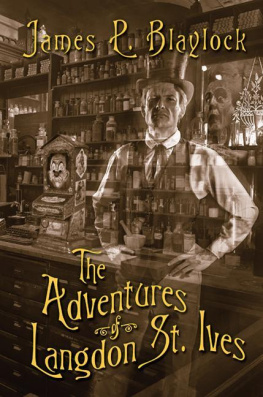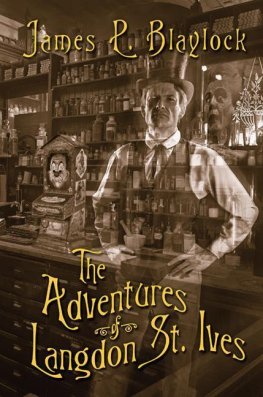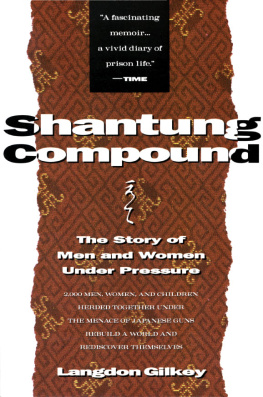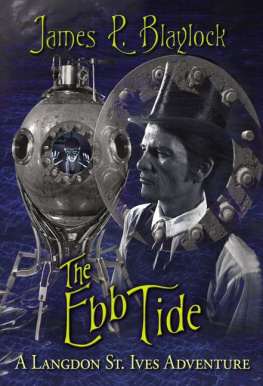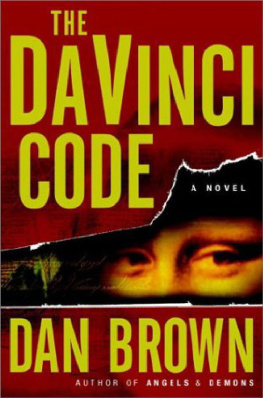James P. Blaylock - The Adventures of Langdon St. Ives
Here you can read online James P. Blaylock - The Adventures of Langdon St. Ives full text of the book (entire story) in english for free. Download pdf and epub, get meaning, cover and reviews about this ebook. year: 2008, publisher: Subterranean, genre: Art. Description of the work, (preface) as well as reviews are available. Best literature library LitArk.com created for fans of good reading and offers a wide selection of genres:
Romance novel
Science fiction
Adventure
Detective
Science
History
Home and family
Prose
Art
Politics
Computer
Non-fiction
Religion
Business
Children
Humor
Choose a favorite category and find really read worthwhile books. Enjoy immersion in the world of imagination, feel the emotions of the characters or learn something new for yourself, make an fascinating discovery.
- Book:The Adventures of Langdon St. Ives
- Author:
- Publisher:Subterranean
- Genre:
- Year:2008
- Rating:3 / 5
- Favourites:Add to favourites
- Your mark:
- 60
- 1
- 2
- 3
- 4
- 5
The Adventures of Langdon St. Ives: summary, description and annotation
We offer to read an annotation, description, summary or preface (depends on what the author of the book "The Adventures of Langdon St. Ives" wrote himself). If you haven't found the necessary information about the book — write in the comments, we will try to find it.
The Adventures of Langdon St. Ives — read online for free the complete book (whole text) full work
Below is the text of the book, divided by pages. System saving the place of the last page read, allows you to conveniently read the book "The Adventures of Langdon St. Ives" online for free, without having to search again every time where you left off. Put a bookmark, and you can go to the page where you finished reading at any time.
Font size:
Interval:
Bookmark:
The Adventures of Langdon St. Ives Copyright 2008 by James P. Blaylock.
All rights reserved.
Dust jacket and interior illustrations Copyright 1992, 2008 by J. K. Potter.
All rights reserved.
Introduction Copyright 2008 by Tim Powers. All rights reserved.
Afterword Copyright 2008 by James P. Blaylock. All rights reserved.
Individual copyrights:
Introduction Copyright 2008 by Tim Powers.
The Ape-Box Affair Copyright 1978 by James P. Blaylock.
The Hole in Space Copyright 2002 by James P. Blaylock.
The Idols Eye Copyright 1984 by James P. Blaylock.
Homunculus Copyright 1986 by James P. Blaylock.
Two Views of a Cave Painting Copyright 1988 by James P. Blaylock.
Lord Kelvins Machine Copyright 1992 by James P. Blaylock.
Afterword Copyright 2008 by James P. Blaylock.
Interior design Copyright 2008 by Desert Isle Design, LLC. All rights reserved.
Electronic Edition
ISBN
978-1-59606-345-7
Subterranean Press
PO Box 190106
Burton, MI 48519
www.subterraneanpress.com
Table of Contents
Introduction
by Tim Powers
Nobody who knew him in 1972 would have guessed that James Blaylock would one day be the most original science fiction writer alive, which he now is, Cordwainer Smith and Philip K. Dick no longer being with us. Blaylock also writes fantasy, and some people would say thats all he writesbut those people would be noting the consistent tone and assuming a consistent substance. Lovecrafts several science fiction stories often get categorized as supernatural horror for the same reason.
In 1972, though, when he and I were in college, I dont think many people would have guessed hed be a writer at all. He was a dedicated surfer in his spare time, and his part-time job was doing construction clean-upknocking down garages and sawing the roofs off of houses, sometimes at the wrong addresses by mistake. And for a while, before changing his major to English, he was a Psychology major. That didnt work out, luckilyI cant think of anybody less suited to that narrow discipline than Blaylockthough the world may have thereby lost a spectacular psychiatrist. I picture a sort of mix of Carl Jung and Federico Fellini.
He was already a writer, though. So was I. Neither of us had had anything published, but we were busily writing stories, and soon began long, never-to-be-finished novels. Of course we both read incessantly, the assigned books for our English literature classes blending in with the stuff we were reading on our own incentive, and it quickly became clear that, although in many ways we were writing the same sorts of adventure-and-grotesquerie stories, we were approaching them from very different points of the literary compass. I had grown up on writers like Fritz Leiber and Theodore Sturgeon, Henry Kuttner and Leigh Brackett, while Blaylock was operating from a foundation of Robert Louis Stevenson, Mark Twain, and P. G. Wodehouse.
And Lawrence Sterne. A lot of people love Tristram Shandy , but I dont think anybody since Sterne himself has been as compatible to that book as Blaylock is. Corporal Trims apologia in it, which the character Doctor Slop admires for the depth of its philosophy as much as for its insight into physiology, could be a summary of Blaylocks oeuvre : I infer, an please your worship, replied Trim, that the radical moisture is nothing in the world but ditch-waterand that the radical heat, of those who can go to the expence of it, is burnt brandy,the radical heat and moisture of a private man, an please your honour, is nothing but ditch-waterand a dram of genevaand give us but enough of it, with a pipe of tobacco, to give us spirits, and drive away the vapourswe know not what it is to fear death.
Trims philosophy is echoed by many Blaylock characters, as when St. Ives says, in Lord Kelvins Machine , We must have our hand in. Its nothing more nor less than the salvation of the Earth, secularly speaking, that were involved in, and Hasbro asks, Shall we want lunch first, sir? and St. Ives replies, Kippers and gherkins, thank you.
And the business about radical heat and radical moisture particularly anticipates Blaylock, who likewise doesnt hesitate to deal with principles of science in his fiction, especially in the St. Ives stories.
He is, as I said, a science fiction writer.
As in the Sterne passage, its generally antique science, to be sure. Its a little-known fact, says Bill Kraken in Homunculus , that the equator, you see, is a beltnot cowhide, mind you, but what the doctor called elemental twines. Them, with the latitudes, is what binds this earth of ours. It isnt as tight as it might be, though, which is good because of averting suffocation.
Maybe a better term would be crazy science. But its presented solemnly.
And its perfectly appropriate to the Victorian world Blaylock writes aboutwhich isnt precisely the Victorian world that actually existed. Fellow-writer K. W. Jeter got Blaylock and I interested in 19th century London with his 1979 novel Morlock Night , and he introduced us to the cornerstone research work for the period, Henry Mayhews London Labor and London Poor but somehow Blaylocks London, accurate as it is in its geography and demographics, is a more magical city than the real one could ever have been. Blaylock cant help but impose his own weird and amiable and Byzantine perspective on it.
And while it might not be a perspective that exactly reflects the actual 19th centurys, neither does it reflect that of the 20th or 21st centuries. Blaylock isnt really a citizen of those, literarily.
Raymond Chandler said once of his fictional private detective Philip Marlowe that he was a realistic character except in that such a person would never in real life become a private detective. The science fiction and fantasy fields have, more often than we could have hoped for, been the venue of writers who seem to have landed there by some mistake, who seem as if they should in real life have been writing a more obviously elevated sort of fiction. I think of Dick, and Ballard, and Tiptree, and Wolfe. And Blaylock, with his uniquely eccentric characters and locales and melodrama and humor, is certainly one of them too.
The Ape-Box Affair
A good deal of controversy arose late in the last century over what has been referred to by the more livid newspapers as The Horror in St. James Park or The Ape-Box Affair. Even these thirty years later, a few people remember that little intrigue, though most would change the subject rather abruptly if you broached it, and many are still unaware of the relation, or rather the lack of relation, between the actual ape-box and the spacecraft that plunked down in the Parks duck pond.
The memoirs of Professor Langdon St. Ives, however, which passed into my hands after the poor mans odd disappearance, pretty clearly implicate him in the affair. His own orang-outang, Ill swear it, and the so-called Hooded Alien are one and the same creature. There is little logical connection, however, between that creature and the thing in the box which has since also fallen my way, and is nothing more than a clockwork childs toy. The ape puppet in that box, I find after a handy bit of detective work, was modeled after the heralded Moko the Educated Ape which toured with a Bulgarian Gypsy fair and which later became the central motif of the mysterious Robert Service sonnet, The Headliner and the Breadliner. That the ape in the box became linked to St. Ivess shaven orang-outang is a matter of the wildest coincidencea coincidence that generated a chain of activities no less strange or incredible. This then is the tale, and though the story is embellished here and there for the sake of dramatic realism, it is entirely factual in the main.
***
Professor St. Ives was a brilliant scientist, and the history books might some day acknowledge his full worth. But for the Chingford Tower fracas and one or two other rather trivial affairs, he would be heralded by the Academy, instead of considered a sort of interesting lunatic.
Next pageFont size:
Interval:
Bookmark:
Similar books «The Adventures of Langdon St. Ives»
Look at similar books to The Adventures of Langdon St. Ives. We have selected literature similar in name and meaning in the hope of providing readers with more options to find new, interesting, not yet read works.
Discussion, reviews of the book The Adventures of Langdon St. Ives and just readers' own opinions. Leave your comments, write what you think about the work, its meaning or the main characters. Specify what exactly you liked and what you didn't like, and why you think so.

